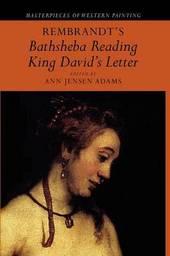
|
Rembrandt's 'Bathsheba Reading King David's Letter'
Paperback / softback
Main Details
Description
Rembrandt's masterful Bathsheba Reading King David's Letter is unusual both as a history painting and as a portrayal of a nude. Instead of displaying a sumptuous body for the viewer's delectation, Bathsheba elicits our empathy. This collection of essays by seven leading Rembrandt scholars examines its qualities from perspectives ranging from changing perceptions of female beauty and the nude, technical analysis, and biographical and psychological analysis of the artist, the subject, and the viewer. The juxtaposition of these different approaches to a single work highlights how both the artist and his art are constructed through the questions we ask, and facilitates a comparison of some of the different approaches practiced by art historians today.
Reviews"Ann Adams's introduction deftly presents current Rembrandt studies and critical presentation of the following essays, making the connections and distinctions in theit approaches. For students, this sampling of approaches with respect to a single art work is a rich opportunity to gain access to the discipline of art history, which is, by its definition and essence, interdisciplinary in material and methodology." Amy Golahny, Historians of Netherlandish Art Newsletter "...essential reading not only for their respective pictures, but for their respective artists...the essays work collectively to round out understanding of a key work and remind us of why scholarly attention has created a canon." Renaissance Quarterly
|